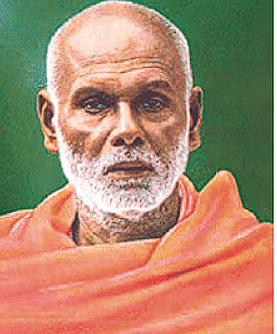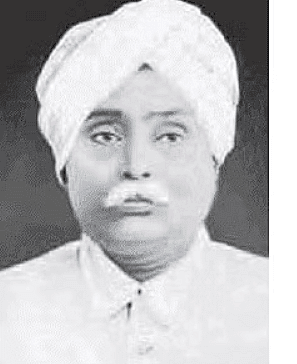Freedom Struggle Class 5 Notes SST
| Table of contents |

|
| Introduction |

|
| Cultural Awakening in India |

|
| Indian National Congress |

|
| Moderates and Hardliners |

|
| Partition of Bengal |

|
| Swadeshi Movement |

|
| The Revolutionaries |

|
| Gandhiji's Return to India |

|
Introduction
- Imagine people all across India—soldiers, farmers, and villagers—rising up with one powerful voice: “We want to be free!”
- This was the spirit of the Revolt of 1857. Although the revolt didn’t succeed, it sparked a deep desire for freedom in the hearts of Indians.
- After the uprising, the British Crown took direct control of India from the East India Company.
- But something important had changed—people began to see themselves as part of one nation.
- It was the beginning of a long and inspiring journey towards independence.
- Let’s explore how this struggle unfolded and how India’s fight for freedom took shape!
 Narayana Guru
Narayana Guru
Cultural Awakening in India
The British brought modern education, which helped some Indians learn new ideas to improve society.
Reformers (people who wanted to fix wrong practices):
Raja Ram Mohan Roy: Stopped bad practices like sati (widows burning on their husband’s funeral), child marriage, and the caste system. He supported women’s education and widow remarriage.
Ishwar Chandra Vidyasagar: Worked for widow remarriage and women’s education, and fought against child marriage and the caste system.
Sir Syed Ahmed Khan: Helped remove social evils and promoted education, especially for Muslims.
Narayana Guru: Worked to stop caste discrimination and help weaker communities.
Debendranath Tagore: Fought against sati, child marriage, and killing baby girls.
These changes helped Indians come together to fight the British.
Indian National Congress
A.O. Hume, a British Civil Servant, established the Indian National Congress in 1885.
- The first Congress session took place in Bombay, presided over by W.C. Banerjee. 72 delegates from various parts of India attended the inaugural session.
- Annual Congress sessions were held to demand Indian self-governance. Key Presidents included Dadabhai Naoroji, S.N. Banerjee, G. Subramaniya Aiyer, Gopal Krishna Gokhale, Badruddin Tayabji, Pheroz Shah Mehta, and Surendranath Banerjee.
- Initially, Congress leaders were moderate in their requests, believing in peaceful appeals to British authorities.
- The British became angry, thinking the Congress was against them, which made the leaders even more restless.
- Three prominent leaders emerged advocating stronger action—Bal Gangadhar Tilak, Bipin Chandra Pal, and Lala Lajpat Rai.
- Tilak, known for his fiery stance, edited Kesari and famously proclaimed, "Freedom is my birthright, and I shall have it."
- These leaders, termed "Extremists," differed from the earlier "Moderates" within the Congress.
- As Congress became more popular, the British rulers introduced laws to limit freedom of speech and the press. Despite these efforts, they were unable to stop the growth of Congress.
 Lala Lajpat Rai
Lala Lajpat Rai
Moderates and Hardliners
The INC had two groups with different ways to fight for freedom:
Moderates: Wanted to talk and write letters to the British to solve problems. Leaders included Dadabhai Naoroji, Surendranath Banerjee, and Badruddin Tyabji.
Hardliners (Lal-Bal-Pal): Wanted stronger actions like strikes and protests. Leaders were Bipin Chandra Pal, Lala Lajpat Rai, and Bal Gangadhar Tilak. Tilak wrote in his newspaper Kesari, “Freedom is my birthright and I will have it.”
Partition of Bengal
In 1905, Lord Curzon split Bengal into two parts: East Bengal (mostly Muslims) and West Bengal (mostly Hindus). He said it was for better administration, but it was to weaken Hindu-Muslim unity.
Indians, both Hindus and Muslims, were angry. They started:
Swadeshi Movement: Used only Indian-made goods.
Boycott Movement: Stopped using British goods. People burned British cloth, refused to pay taxes, and held strikes.
People sang Vande Mataram in processions, which inspired them. The British banned the song from public meetings.
Swadeshi Movement
The Indian people became more aggressive in their fight for independence. Therefore Congress initiated the Swadeshi movement, advocating the boycott of British goods.
- The British-made cloth was publicly burned across the country to symbolise resistance.
- Citizens were urged to avoid purchasing British products and instead support Swadeshi goods.
- The boycott of British goods had a significant negative impact on British interests.
Government Response
The British rulers reacted strongly, using force against the leaders of the movement. Protesters in processions were subjected to beatings and police brutality.
Spread of Movement
- Initially starting in Bengal, the movement quickly expanded to other regions like Bombay, Pune, and Madras.
- Due to the widespread resistance, the plan to partition Bengal in 1911 had to be abandoned.
The Revolutionaries
- Revolutionaries were Indians who thought that the British oppression needed to be fought back with resistance and even violence.
- A notable young revolutionary, Khudi Ram Bose, was executed by the British when he was only 15 years old for his actions.
- Even though the Revolutionaries had some success in killing British officers, they were often overpowered and outgunned by the British forces.
- Many of the Revolutionaries faced harsh punishments, including the death penalty.
- Some Indians living abroad showed their support for the revolutionary cause by providing help and resources.
- The British government offered some political reforms to Indians, but they continued to exploit divisions between Hindus and Muslims.

After World War I
- Indian forces fought for Britain, hoping for freedom post-war.
- British response post-war was stricter, with harsh treatment of protesters.
Rise of the Muslim League
- Formed in 1906 due to the British divide-and-rule policy.
- Supported by the British, eventually led to India's partition on communal lines.
Gandhiji's Return to India
- Gandhi returned to India in 1915 after working as a lawyer in South Africa.
- His time in South Africa influenced his beliefs about British oppression and discrimination.
- After coming back to India, Gandhi became involved in the Independence Movement.
- He brought new leadership and guidance to the movement.
- His efforts played a significant role in achieving India's independence in 1947.
|
33 videos|264 docs|50 tests
|
FAQs on Freedom Struggle Class 5 Notes SST
| 1. What was the role of social reformers in the Indian freedom struggle? |  |
| 2. What was the purpose of the Indian National Congress during the freedom struggle? |  |
| 3. How did the 'Divide and Rule' policy affect the Indian freedom struggle? |  |
| 4. What was the significance of the Swadeshi Movement in India's freedom struggle? |  |
| 5. What impact did Gandhiji's return to India have on the freedom struggle? |  |
















